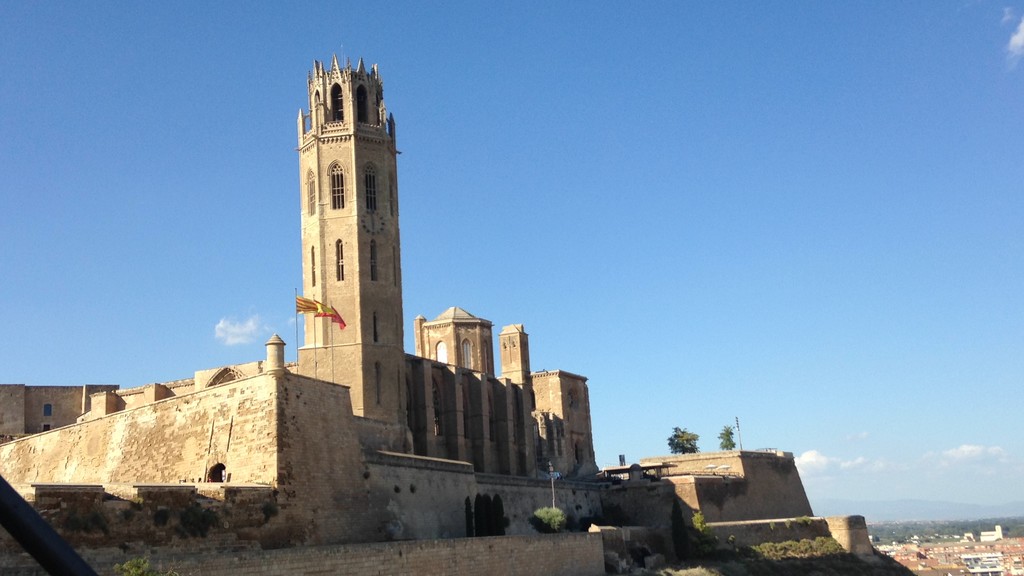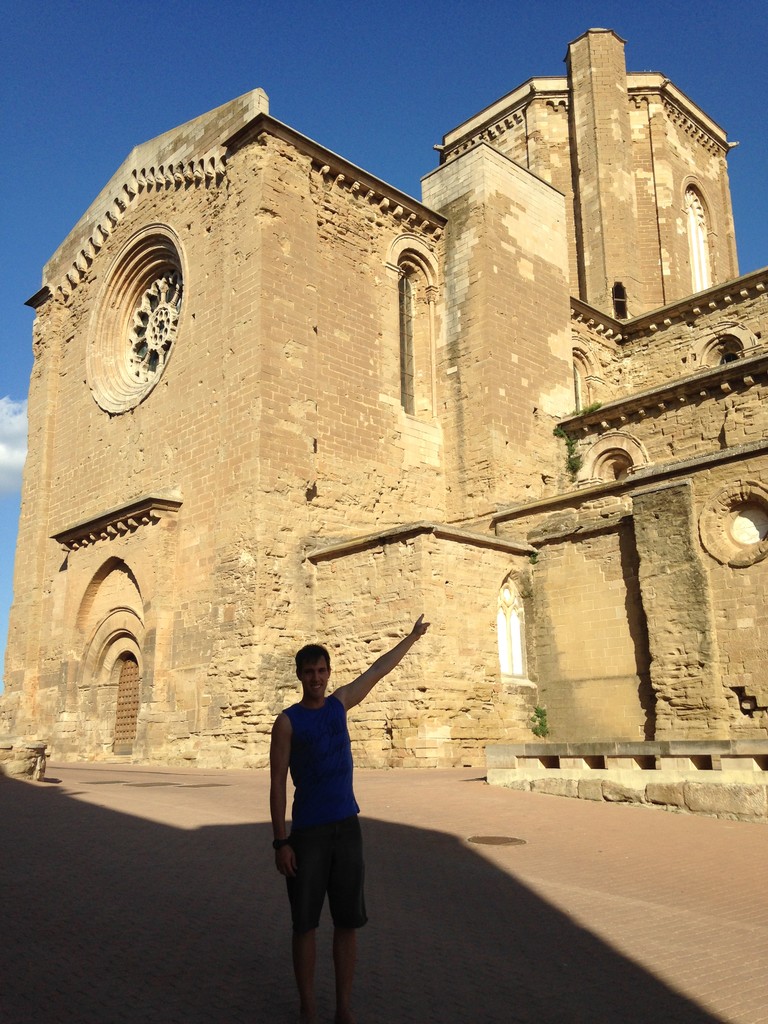Standing out against the blue sky of Lleida from the hillock surmounting the city, the ancient cathedral (La Seu Vella) has witnessed the several heavy blows which the city has received during its almost millenarian history, bearing itself the marks of some of them. Nevertheless, it is still a really fascinating landmark, in some sense unique in its kind precisely due to its peculiar location. In my opinion, the vast estate including the cathedral, the nearby Castell de la Suda and the latter fortifications is itself worth a trip to this city located in the remote Catalan inland.
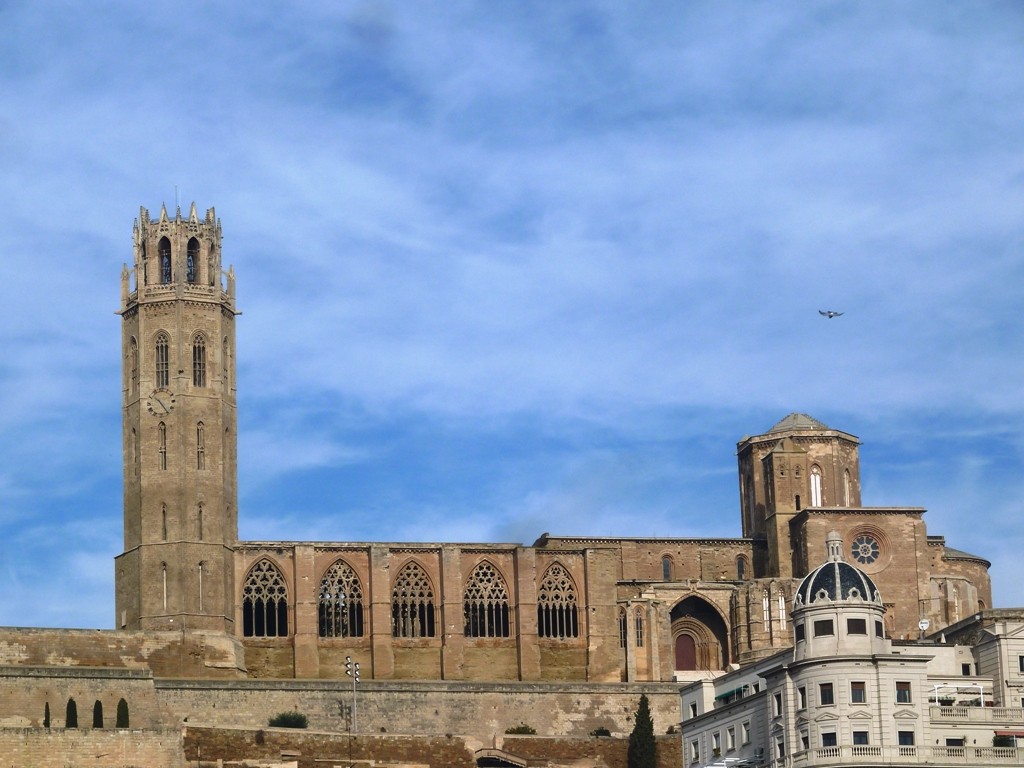
Since the early XIII century, when the first stone for its construction was laid, the cathedral has been an imposing presence for the city of Lleida. Probably meant to replace a former Muslim temple, the Cathedral was built between 1200 and 1278, when the archbishop of Lleida, one of the most powerful of the region, consecrated the church. It was not until 1431, though, that the whole estate was finally completed. In the meantime, indeed, a wonderful cloister and a 70-metres high bell tower were added.
Unfortunately, these sacred buildings were not spared by the Succession War which put an end to the autonomy of Catalonia: when the Spanish king Felipe V took the city in 1714 after a long siege, he turned the cathedral into a military quarter and built a mighty defensive line around it. However, not even this foolish act was enough to spare the church another unpleasant handling, this time by the Napoleonic troops which invaded the city at the beginning of the XIX century. On this premises, the heavy damaged caused to the Civil War might have been the last nail in the coffin for La Seu. Once restored (at last) to its original religious function, instead, the cathedral gradually recovered its original beauty, which nowadays shines undisputedly.
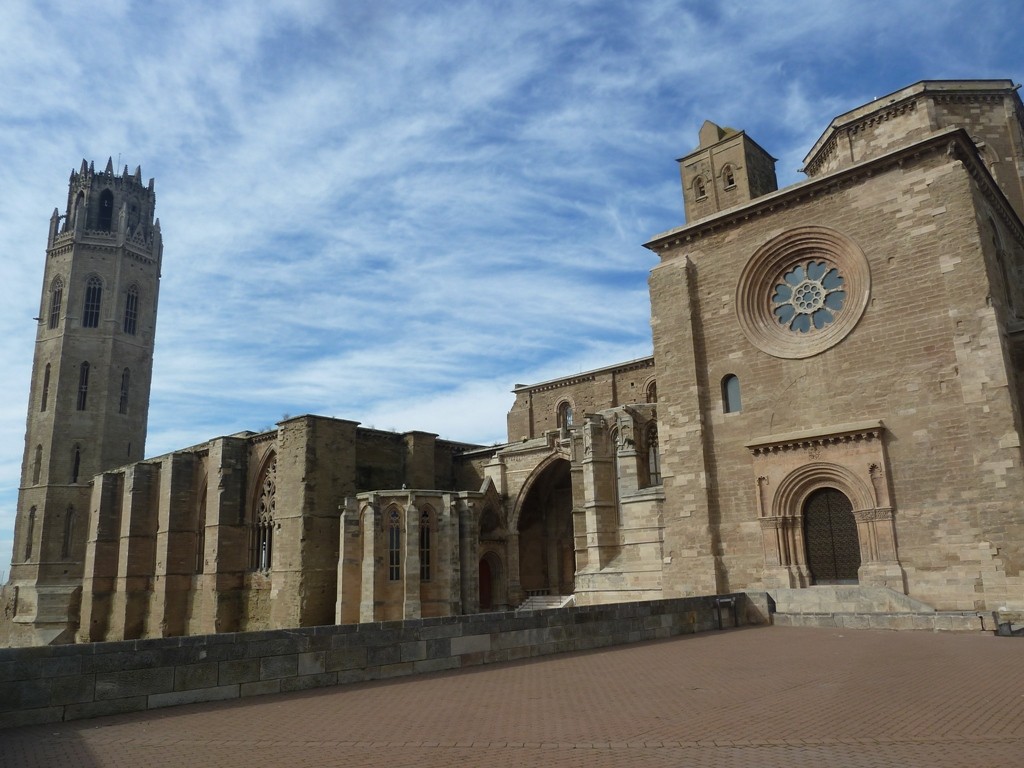
The access to the Turò de la Seu (hill of the cathedral) is possible through the lift located a few metres far from Plaça de Sant Joan or through the series of staircase rising from the area of Carrer Sant Martì. Personally, I would definitely recommend this second option, as the climb is not a hard one, while the views offered approaching the top are really nice. Once crossed the ancient gate called Puerta de los Leones, indeed, it is possible to reach the area where the cathedral is located. Overcoming the first defensive line, indeed, you will make your way to the left side of the church. It is probably a good idea to start your visit with a tour around the building, providing a quite a wonderful view especially on clear days.
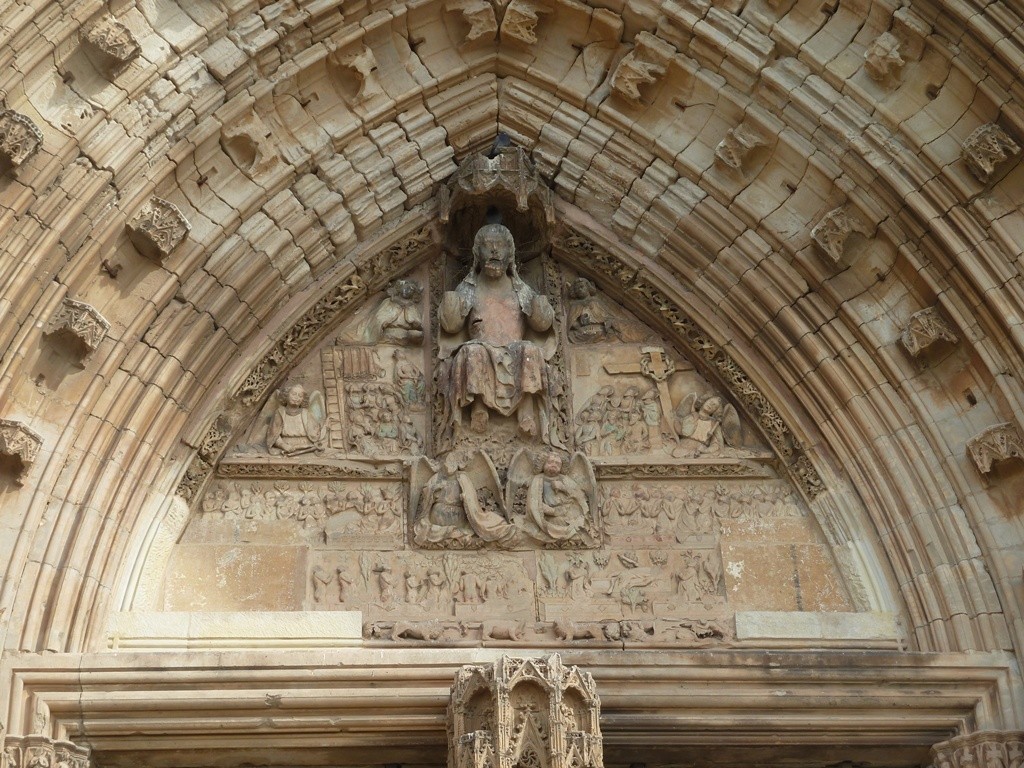
If the left side may appear disappointing, indeed, the opposite one is really amazing. Providing a bird's eye view over the city and the surrounding area, indeed, the right side of the cathedral is doubtlessly the best one. A panoramic view from the northern point of the terrace will include the bell tower and two gracious side entrances to the church, called Puerta de la Anunciaciòn and Puerta de los Fillols. Obviously, their decorations were originally more abundant and ambitious, but most of them is currently housed in the Museu de Lleida in order to preserve them from a quick decline due to the passing of time and the human neglect.
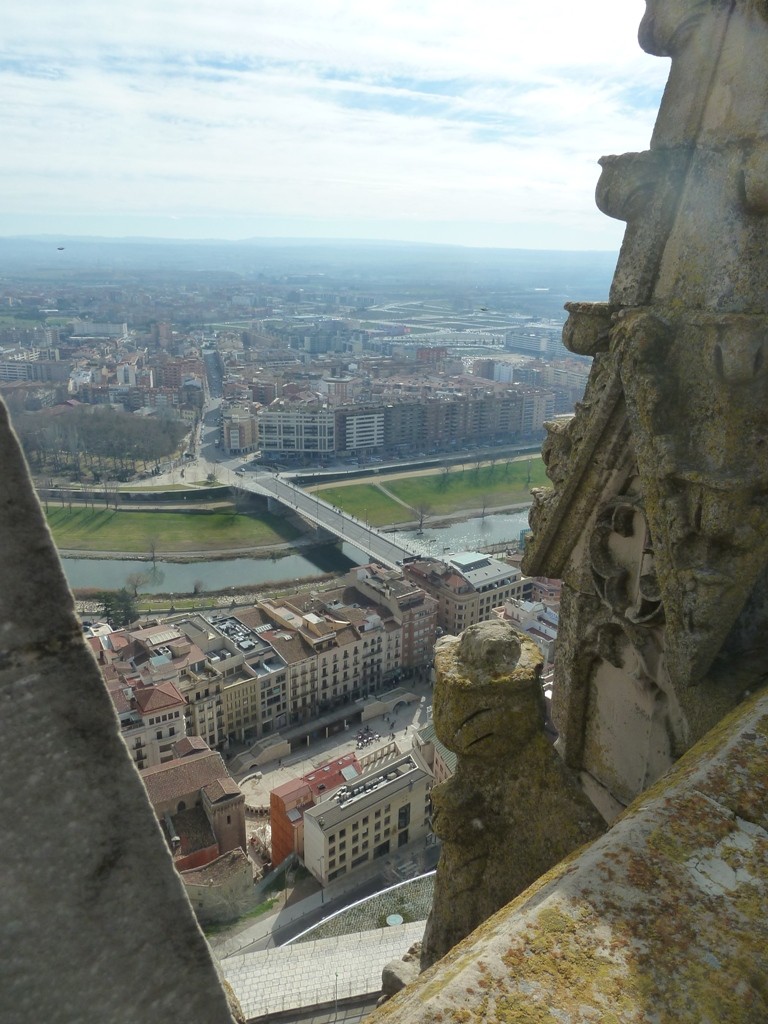
Once back to the point where you had set off, it is time to move to the most interesting part of the tour: climbing a bit more, you will reach the facade of the cathedral, characterised by the wonderful Puerta de los Apostoles, whose splendid decorations really deserve a closer look. The entrance fee to the Cathedral is quite cheap (4 Euros), and certainly worth, while you could probably do without the additional charge which would allow you to see also the inside of the Castell. The cloister, indeed, is really magnificent: one of the largest of its kind, it is made pretty unique by its aerial location, which allows spectacular views onto the surroundings through the mullioned windows.
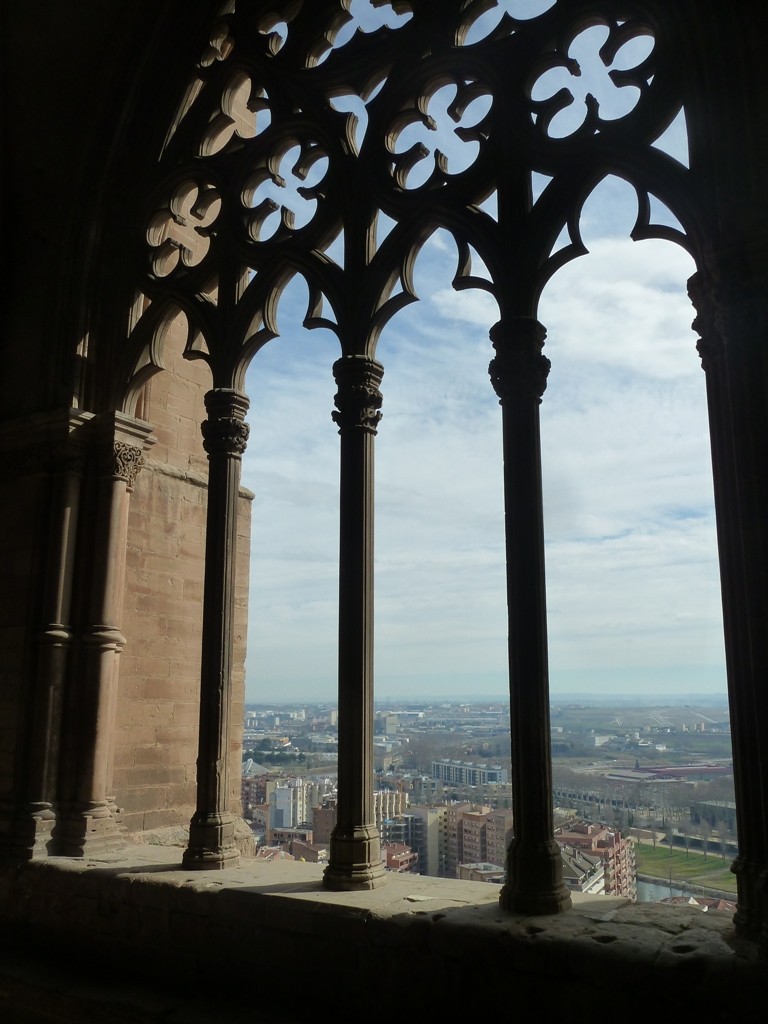
The inner yard is quite pleasant as well, rich in vegetation and offering a few interesting sights of the bell tower. Instead, it is not probably worth climbing up the 238 steps leading to the top of the tower: as for obvious reasons a series of protection is placed there, the landscape is not as breath-taking as it could have been otherwise. Anyway, you will find the visit to the Cathedral itself more to your taste: though not very big, the church indeed preserves an incredible series of sculptures, low reliefs and small domes. The latter are made even more fascinating by a system of mirrors which allow a fascinating capsized glimpse of them.
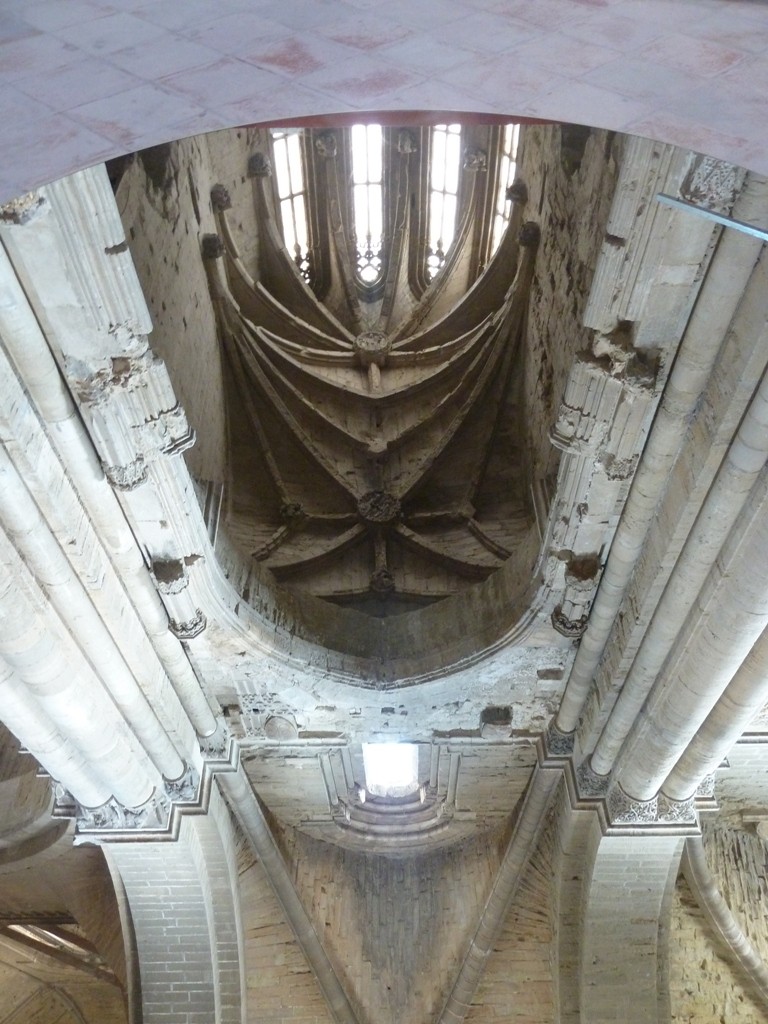
As I was saying, there is probably no need to buy a ticket for the Castell del Rei (also called Castell de la Suda) too. Very few interesting features, indeed, are left of this fortress, built in the XVII century. A stroll around the castle, located at the very top of the hill, will be enough to have a look at the outside, while the inner part houses an exposition explaining the history of the various fortress which have been built there (a castle had been probably built also by the Moors towards the end of the IX century. But again, it will be a good idea to devote most of your time to appreciate La Seu!

